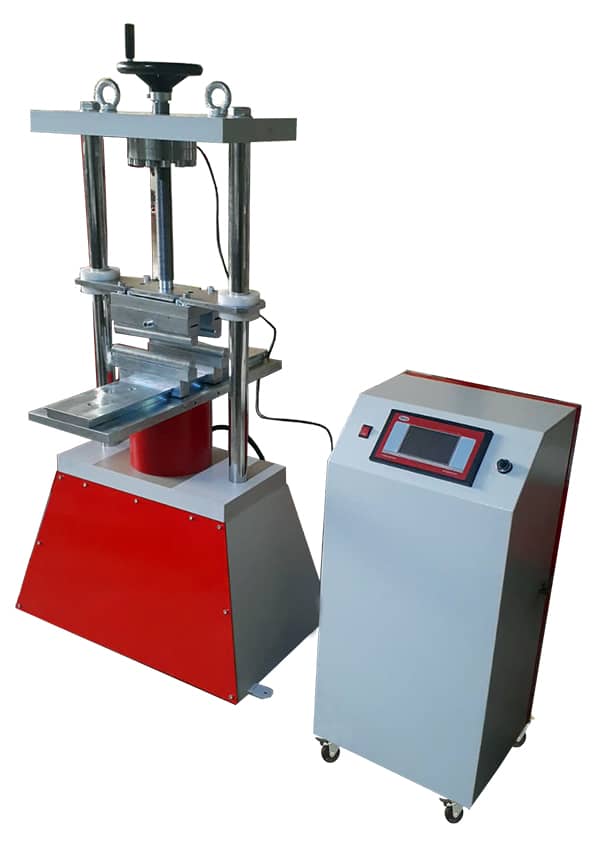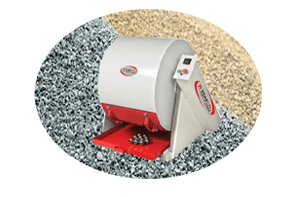

| C5240/100 | 100 kN Automatic Flexural Testing Machine, 220-240 V 50-60 Hz |
| C5240/100-110 | 100 kN Automatic Flexural Testing Machine, 110 V 60 Hz |
| C5240/200 | 200 kN Automatic Flexural Testing Machine, 220-240 V 50-60 Hz |
| C5240/200-110 | 200 kN Automatic Flexural Testing Machine, 110 V 60 Hz |
| C5240/300 | 300 kN Automatic Flexural Testing Machine, 220-240 V 50-60 Hz |
| C5240/300-110 | 300 kN Automatic Flexural Testing Machine, 110 V 60 Hz |
| C5240/100 | 100 kN Automatic Flexural Testing Machine, 220-240 V 50-60 Hz |
| C5240/100-110 | 100 kN Automatic Flexural Testing Machine, 110 V 60 Hz |
| C5240/200 | 200 kN Automatic Flexural Testing Machine, 220-240 V 50-60 Hz |
| C5240/200-110 | 200 kN Automatic Flexural Testing Machine, 110 V 60 Hz |
| C5240/300 | 300 kN Automatic Flexural Testing Machine, 220-240 V 50-60 Hz |
| C5240/300-110 | 300 kN Automatic Flexural Testing Machine, 110 V 60 Hz |
The Automatic Flexural Testing Machines are range of 100, 200 kN and 300 kN capacity flexure testing machines have been designed for reliable and consistent testing of flexural test on standard concrete beams, concrete or natural stone kerbs, concrete paving flags, and natural stone slabs and tensile splitting test of concrete paving blocks. These flexure testing machines are the result of con tinuous research to upgrade the testing machines with latest technologies to conform to the latest standards EN 12390-5, EN 12390- 6, EN 1338, EN 1340, BS 1881, ASTM C78, C293 and C496 in terms of its technical properties taking into account client requirements. These also meet the requirements of CE norms for health and safety of the operator.
Tests can be performed by either on TMC300 Unit or on a computer with using free software. The advantages of performing tests on computer with using software, such as reporting, graphical output, etc. Setting test parameters, including pace rate only required when the specimen type is changed. Pressing the START button on the control unit.
The machine automatically starts the rapid approach; switches the test speed after 1% of the load capacity of the machine and stops once the specimen failure. Automatically saves the test parameters and test results.
The Testmak range of Flexural Machines have the accuracy of Class 1 starting from 2% of the full capacity. Flextural test assemblies should be ordered seperately.
PURPOSE OF BENDING EXPERIMENT
The bending test is carried out to determine the design information about the strength of the material and to determine the mechanical properties of the material against bending. It can be said that the part of the experiment that can be applied to various materials such as metal, plastic, ceramics, concrete and natural stones is natural stones and concrete.
Elements such as beams that carry transverse loads are subject to bending. Bending moments occur in each region of the beam. This is related to bending stress. This situation reveals the importance of knowing the bending strength of concrete used for fortification purposes in tunnels and galleries in mining and in many structures (buildings, roads, bridges, dams, etc.). Natural stones such as marble and granite used in interior and exterior flooring and stair steps are exposed to the loads of pedestrians and vehicles.
Since the use of natural building stones is generally in the form of plates of certain sizes and thicknesses, bending strength emerges as an extremely important parameter for these materials. Because plate thickness, plate size and distance between support points can be determined according to the bending strength of the rock.
Flexural strength is determined in two ways: three-point and four-point.
When we look at TS EN standards, the test method names for natural stones are "Determination of bending strength under intense load" for three-point bending strength and "Determination of bending strength under constant moment" for four-point bending strength. Currently, the current standards are TS EN 12372 (Determination of bending strength under intense load) and TS EN 13161 (Determination of bending strength under constant moment), respectively.
LCD DATA ACQUISITION CONTROL SYSTEM
The Data Acquisition Control provides real-time graphical indication. Automatically determines the load rate in accordance with the international standards upon sample type. With the STOP and START buttons, the test will automatically stop or start.
LCD Data Acquisition Control System has different units are available (kN / kgf / lbf). Can do Automatic Load Rate upon Sample Type. Total load and also per area are given. and has real time graph indication. Stops Automatically, when Test is completed. Test results can be send printer to with software or from the thermal printer. Can do calibration easily from 5 points. Manual Control is available. Computer and printer are not included in the price.
Touch Screen Control Panel Technicial Specifications
• 3 universal analog input sockets (ADC)
• Each analog input with 18 bit precision (1/256000)
• 1 replacement analog input
• A total of 4 analog high-precision measuring capacities
• 2 analog output sockets (DAC)
• Analog outputs generate a 0-10V DC output signal
• Motor speed control devices, servo valves with this output signal, proportional valves, etc. reference signal is produced.
• PULSE / DIR outputs (PULSE / DIR / ENA) to control the servo and stepper motor drives
• 5 digital outputs for general purpose (can pull relays and control different electrical units)
• 5 digital inputs for general purpose (receives and evaluates input signals like limit contacts from the environment)
• Potentiometer input (reference signal input for calibration and remote control)
• 2 RS232 serial communication signal outputs (communicates with computers)
• It also connects to motor drives via serial communication via MODBUS connection
• USB communication signal output (communicates with computers)
• Connects to local networks and the Internet with Ethernet 10/100 network connection output (optional)
• Connects to portable devices via Bluetooth wireless connection (optional)
• 500 test results can be stored in internal memory
• Due to the SD (memory) card connection, a large number of test results can be stored in the device memory (40,000 test results).
• In addition, the results can be taken from the device memory and transferred to the computer as an Excel table. (Optional)
• Color TFT display supports 16 lar and 7 800 screen sizes, supports 16M colors and supports 800x480 pixel screen resolution
• Resistive touch screen allows easy operation of device functions by touching the screen
• Access to frequently used functions with 6 membrane keypads
• The industrial standard operates with 24V DC supply voltage. Built-in voltage filter and regulator protects against input signal fluctuations
• Sensor modules are compatible with loadcell (load cell), pressure sensor (4-20 / 0-20 mA), potentiometric distance sensors, strain washers, thermocouples and all kinds of mV output sensors.
• Provides precise calibration with multi-point calibration (up to 10 points)
• Setting and calibration menus are password protected and prevent unauthorized use
• Allows testing with a computer or device
• There are many test sample information screens and test methods in the device memory and tests can be performed easily
• Different menu languages can be selected via the device via language support
• Speed control algorithm is closed loop PID control and all parameters can be adjusted on user side.
• The device can switch between one-touch load and deformation control modes
• The graphical field that visualizes the test results on the screen has the ability to change the scale automatically and automatically adjusts the optimal scale as the values change
• Firmware updates can be made via USB input. In addition, via the computer allows remote or internet update.
When energized to the device, on the digital indicator display will show the following information.

After selecting the test to be performed, dimension values are entered with the menu below.

The test is started with the next step, the test menu.

Start the Test
Press (START) to start the test. First, the device performs a bit of fast loading up to the boot value. When the boot value is reached, the speed is automatically set to the test speed level and kept constant at this level until the end of the test.
Pause on Load
If you want to stabilize the load at any load level during the test (PAUSE), press the hold button. In this case, the load is fixed at the load value level when the hold button is pressed and the device starts to wait. If this button is pressed again, the load will resume.
Stop on Load
The device automatically terminates the test when the condition specified for the end of the test occurs.
This condition is usually a decrease in the load as a result of the breakage of the test specimen, but sometimes the test can be completed when a certain load or deformation value is reached.
The user can also end the test at any time by pressing the STOP key at any time (STOP). The unit automatically terminates the test to protect the machine and the sensors when the device detects that the specified loading capacity has been reached.
SOFTWARE
The tests and calibration can be done and monitored with a computer by connecting it to the machine. LCD Control unit can connecting with USB port to the machine. Using the state-of-the-art software provided by TESTMAK with the machine will help performing and managing the tests in a very easy and fast way. By performing the tests via computer, the results can be saved and recalled when required. Reports can be generated automatically by the software and sent to printer.
P.Code |
C5240/100 |
C5240/200 |
C5240/300 |
|---|---|---|---|
Capacity |
100 kN |
200 kN |
300 kN |
Class 1 Range |
4-100 kN |
4-200 kN |
6-300 kN |
Ram Travel |
100 mm |
100 mm |
120 mm |
Max. Vertical Clearance |
425 mm |
425 mm |
425 mm |
Max. Horizontal Clearance |
650 mm |
650 mm |
650 mm |
Max. Clerance Between Lower Rollers |
900 mm |
900 mm |
900 mm |
Power |
1100 W |
1100 W |
1100 W |
Dimensions (wxlxh) |
1260x950x1200 mm |
1370x950x1240 mm |
1450x950x1260 mm |
Weight |
370 kg |
450 kg |
550 kg |